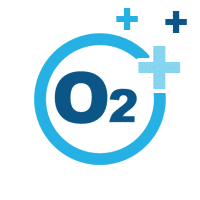Brain Damage
Brain damage is an injury that causes the deterioration or destruction of brain cells. Brain damage includes both Traumatic Brain Injury (TBI), caused by an external force, and Acquired Brain Injury (ABI), occurring at the cellular level. The severity of damage can vary based on they type of injury, but can range from headaches, confusion, and memory problems, to more severe cognitive, behavioral, and physical disabilities.
Benefits of Hyperbaric Oxygen Therapy for Brain Damage:

Increases Amount of Oxygen in the Blood
Stimulates development of new blood vessels from pre-existing vessels as well as the natural development of new blood vessels.

Reduces Inflammation & Swelling
Suppresses the cellular activity of the immune system which triggers swelling when an injury or damage to the body occurs. While this reaction is meant to start healing and protect from injury it can result in secondary injury, pain, and prolonged recovery time.

Preserves, Repairs, & Enhances Cellular Functions
Boosts cellular metabolism, promotes rapid cell reproduction, and enhances collagen synthesis. Collagen is a protein in connective tissues like skin.
Key Research on Hyperbaric Oxygen Therapy for Brain Damage
Recent News on Hyperbaric Oxygen Therapy for Brain Damage
Joe Rogan – Justin Wren – Can Hyperbaric Therapy Reverse Brain Damage?
Justin Wren discusses his experiences with how Hyperbaric Therapy reverses Brain Damage with Joe Rogan.
Howard Stern – How Joe Namath Reversed His Own Brain Damage Caused by Football
The former N.Y. Jets quarterback opens up to Howard Stern in an interview about using a hyperbaric oxygen therapy chamber to reverse damage to his brain and why he wouldn’t want his son to play football.
Hall-of-famer says treatment is curing disabling effects of concussions
From CINCINNATI (WKRC) - by Duane Pohlman National Football League (NFL) statistics reveal its players suffered nearly 2,000 concussions from 2012 to 2019. Even with new concussion protocols designed to protect today’s players from further damage, neurologists say...
Related Indications
Schedule a Consultation
Additional Research
Effect of hyperbaric oxygenation therapy on post-concussion syndrome.
Abstract: The present review evaluated the effect of hyperbaric oxygenation (HBO) therapy on post-concussion syndrome (PCS). Searches for publications from the earliest date possible up until the first week of 2016 were conducted using the electronic databases...
Hyperbaric oxygen therapy for traumatic brain injury: bench-to-bedside.
Traumatic brain injury (TBI) is a serious public health problem in the United States. Survivors of TBI are often left with significant cognitive, behavioral, and communicative disabilities. So far there is no effective treatment/intervention in the daily clinical practice for TBI patients. The protective effects of hyperbaric oxygen therapy (HBOT) have been proved in stroke; however, its efficiency in TBI remains controversial. In this review, we will summarize the results of HBOT in experimental and clinical TBI, elaborate the mechanisms, and bring out our current understanding and opinions for future studies.
Neuroprotection of hyperbaric oxygen therapy in sub-acute traumatic brain injury: not by immediately improving cerebral oxygen saturation and oxygen partial pressure.
Abstract: Although hyperbaric oxygen (HBO) therapy can promote the recovery of neural function in patients who have suffered traumatic brain injury (TBI), the underlying mechanism is unclear. We hypothesized that hyperbaric oxygen treatment plays a neuroprotective...
